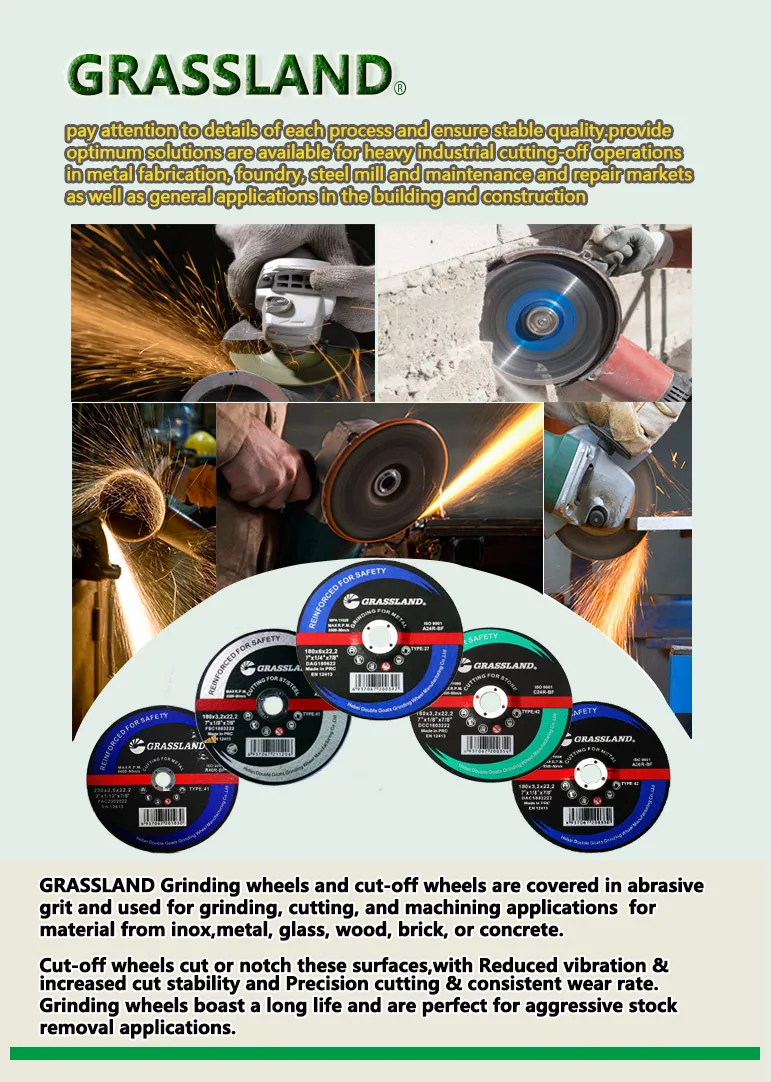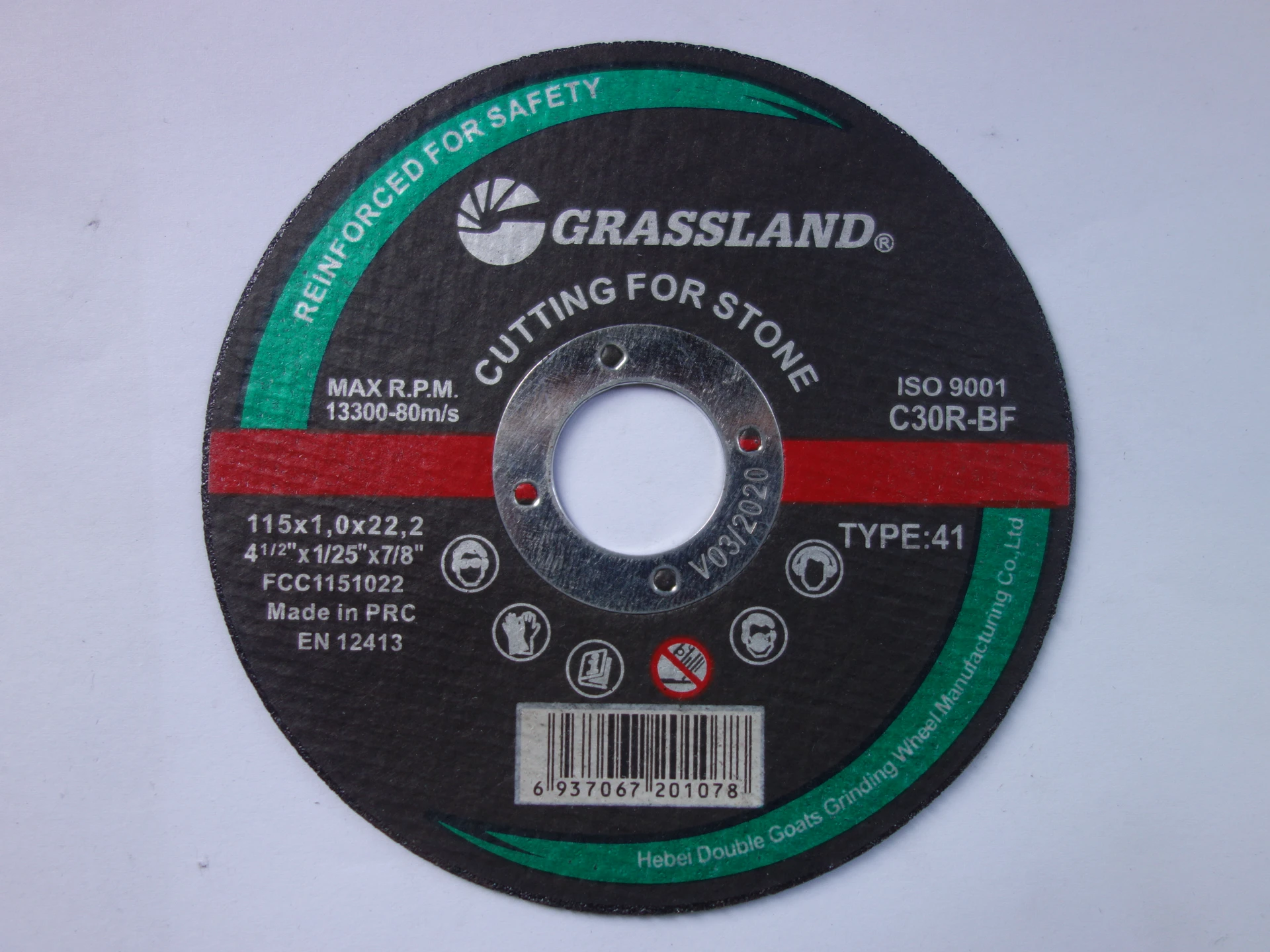

Experience also teaches the value of considering the cutting speed. The rotational speed, measured in RPMs (Revolutions Per Minute), should be compatible with both the grinder and the cutting wheel. High-speed cutting wheels can operate efficiently without overheating or breaking, ensuring safety and effectiveness. Always check the specifications of both your tool and the cutting wheel to avoid any discrepancies that might lead to equipment damage or personal injury. Another aspect of selecting a cutting wheel is understanding its bonding type. Resin-bonded wheels are most common, offering a balance between flexibility and strength. Their resilience makes them particularly suited for metalwork, where varied applications might necessitate a wheel that can handle diverse cutting angles and pressures. In addition to technical specifications, user reviews and trusted brands should guide your purchase. Brands such as DeWalt, Bosch, and Makita have built their reputations on quality and reliability, turning their products into staples of workshops worldwide. Trusting a brand with a legacy of excellent performance reinforces your confidence in the tools you choose. Furthermore, leveraging community feedback allows you to anticipate potential issues or advantages that might not always be evident through mere technical evaluations. To encapsulate, selecting the ideal metal cutting wheel for an angle grinder is a nuanced process that combines material science, real-world application, and brand trust. The intersection of these factors contributes to a tool that performs not just adequately, but exceptionally, aligning with professional standards and enhancing your project outcomes. Whether you are a seasoned tradesman or a passionate DIY enthusiast, the right metal cutting wheel acts as a catalyst in achieving precision, safety, and efficiency in metalwork.
Post time:Jan - 22 - 2025

















